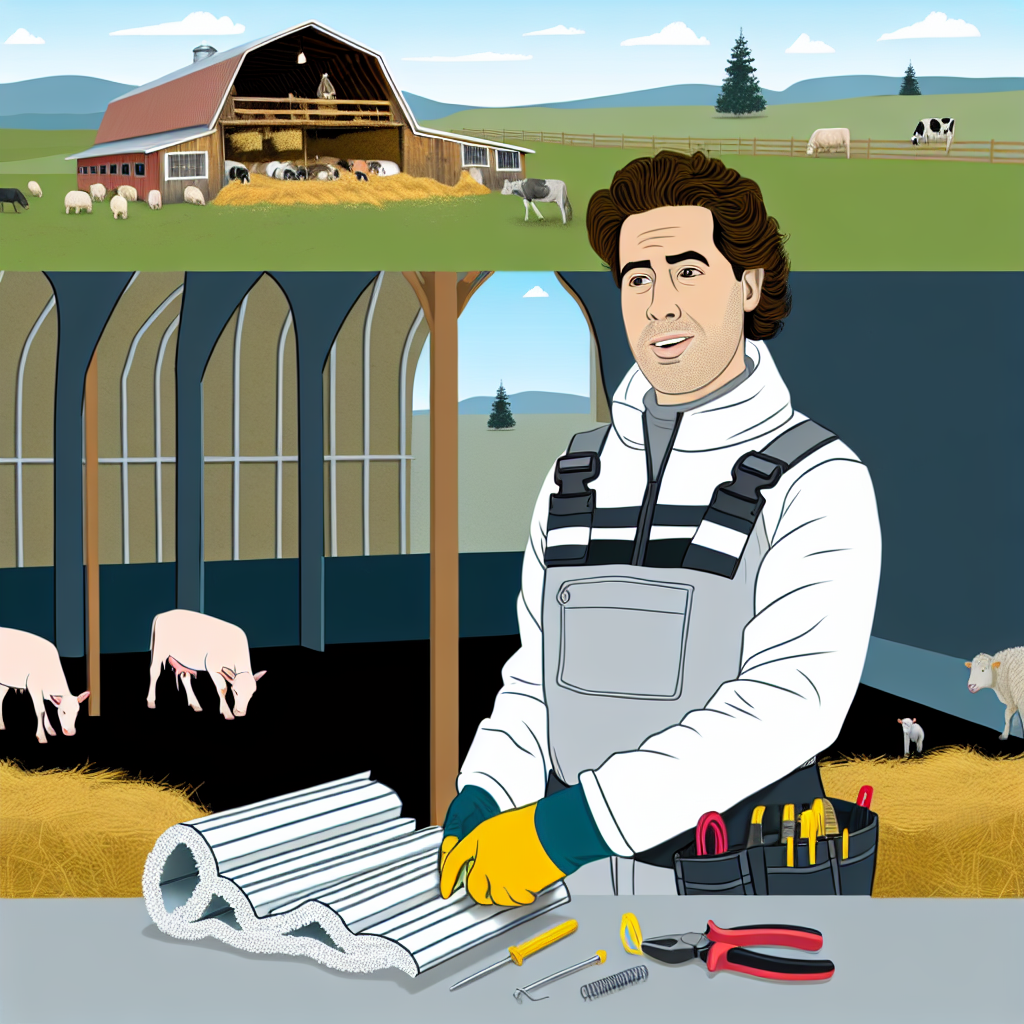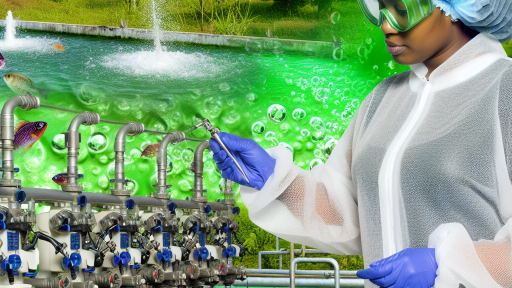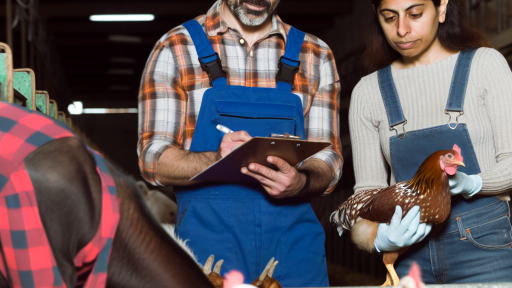Introduction to Insulation in Livestock Facilities
Insulation plays a crucial role in livestock facilities.
It improves animal comfort and health significantly.
Additionally, proper insulation helps in energy conservation.
Farmers can reduce heating and cooling costs through insulation.
Moreover, insulated facilities maintain a consistent internal temperature.
This stability protects livestock from extreme weather conditions.
The types of insulation materials vary widely.
Common options include fiberglass, foam, and reflective barriers.
Each material offers distinct benefits and challenges.
Farmers must consider various factors when selecting insulation.
Cost, effectiveness, and safety are essential considerations.
Moreover, local climate conditions play a vital role.
Favorable insulation techniques can enhance farm productivity.
They can also improve overall animal performance over time.
Incorporating insulation measures can lead to long-term savings.
Transform Your Agribusiness
Unlock your farm's potential with expert advice tailored to your needs. Get actionable steps that drive real results.
Get StartedThus, investing in appropriate insulation techniques is beneficial.
Benefits of Proper Insulation for Livestock Health and Welfare
Maintaining Optimal Temperature
Effective insulation maintains a stable temperature in livestock facilities.
This stability reduces stress on the animals.
Moreover, it prevents overheating during hot months.
Consequently, animals thrive in a more comfortable environment.
Enhancing Air Quality
Proper insulation improves air quality within barns and pens.
This reduction in drafts and humidity limits respiratory issues.
Healthy airways contribute to better overall health in livestock.
Furthermore, this leads to improved productivity and growth rates.
Energy Efficiency and Cost Savings
Good insulation reduces energy consumption for heating or cooling.
Lower energy use translates into significant cost savings for farmers.
Investing in quality insulation pays off in the long run.
Efficient facilities can improve a farm’s bottom line.
Protecting Against Extreme Weather
Insulation plays a vital role in shielding animals from severe weather.
It guards against freezing temperatures in winter.
Additionally, it protects against heat waves in summer.
This protection helps maintain animal health and welfare year-round.
Improving Biosecurity
Insulated buildings can bolster biosecurity measures effectively.
They help keep unwanted pests and harmful pathogens at bay.
Furthermore, better biosecurity contributes to healthier livestock populations.
Ultimately, this leads to reduced disease spread and increased productivity.
Common Insulation Materials Used in Livestock Facilities
Fiberglass Insulation
Fiberglass insulation is a popular choice for livestock facilities.
It offers excellent thermal resistance and moisture control.
Farm owners often appreciate its affordability and efficiency.
Showcase Your Farming Business
Publish your professional farming services profile on our blog for a one-time fee of $200 and reach a dedicated audience of farmers and agribusiness owners.
Publish Your ProfileFoam Board Insulation
Foam board insulation provides high insulation value in a lightweight form.
This material is resistant to moisture, which helps prevent mold.
Additionally, it is easy to install in various building structures.
Spray Foam Insulation
Spray foam insulation is another effective option for livestock buildings.
It expands on application, filling gaps and cracks efficiently.
This feature enhances overall building energy efficiency.
Reflective Insulation
Reflective insulation focuses on reducing radiant heat transfer.
This type is ideal for buildings in warmer climates.
It helps maintain a stable temperature within the facility.
Cellulose Insulation
Cellulose insulation comes from recycled paper products.
This sustainable option offers excellent sound dampening qualities.
It also has effective thermal resistance properties.
Comparison of Insulation Materials
Each insulation material has unique benefits and drawbacks.
Choose based on specific needs and climate conditions.
Consider factors like durability, cost, and ease of installation.
Delve into the Subject: Integrating Exotic Livestock into Your Farm System
Techniques for Insulating Walls and Ceilings
Choosing the Right Insulation Material
Start by selecting the appropriate insulation material for your livestock facility.
Common options include fiberglass, foam board, and spray foam insulation.
Each material offers unique benefits and drawbacks.
For example, fiberglass is cost-effective and resistant to moisture.
On the other hand, spray foam provides superior air sealing properties.
Properly Installing Insulation
Correct installation is crucial for maximizing insulation effectiveness.
Ensure that insulation fits snugly between wall studs and ceiling joists.
Seal any gaps using caulk or foam spray to prevent air leaks.
Additionally, avoid compressing the insulation, which reduces its effectiveness.
Utilizing Vapor Barriers
Incorporate vapor barriers in humid environments to control moisture.
Vapor barriers prevent condensation from forming inside walls and ceilings.
Install them on the warm side of the insulation for optimal effectiveness.
Insulating Doors and Windows
Pay attention to doors and windows during insulation efforts.
Use weather stripping to seal gaps around doors and window frames.
Consider installing insulated doors and double-glazed windows for added efficiency.
Regular Maintenance of Insulation
Conduct regular inspections to maintain insulation integrity.
Check for signs of wear or damage after extreme weather events.
Ensure that insulation remains dry and free from pests.
Replace any damaged sections promptly to maintain thermal performance.
Find Out More: Essential Breeding Strategies for Livestock Farmers
Floor Insulation: Importance and Best Practices
The Crucial Role of Floor Insulation
Floor insulation plays a vital role in maintaining temperature control.
It helps livestock facilities stay warmer in winter and cooler in summer.
Additionally, it reduces energy costs significantly.
Proper insulation creates a more comfortable environment for the animals.
Showcase Your Farming Business
Publish your professional farming services profile on our blog for a one-time fee of $200 and reach a dedicated audience of farmers and agribusiness owners.
Publish Your ProfileComfortable animals tend to produce more effectively.
Moreover, insulation minimizes moisture buildup on the floor.
Types of Insulation Materials
There are various materials available for floor insulation.
Common options include fiberglass, foam boards, and spray foam insulation.
Fiberglass is popular due to its affordability and effectiveness.
On the other hand, foam boards provide excellent resistance to moisture.
Spray foam is ideal for odd-shaped areas and offers superior sealing.
Best Practices for Insulating Floors
Start by evaluating the existing flooring and underlying structure.
Next, choose an insulation material that suits your facility’s needs.
Before installation, ensure that the area is clean and dry.
Proper installation is vital for maximizing insulation effectiveness.
Be sure to follow manufacturer guidelines during the application process.
Regular maintenance checks will help preserve insulation performance.
Benefits Beyond Temperature Control
Insulated floors also improve animal health and comfort.
This enhancement reduces the risk of diseases linked to cold and damp conditions.
Moreover, better floor insulation contributes to lower feed costs.
When animals are comfortable, they are less stressed and eat more efficiently.
Consequently, this leads to improved growth rates and overall productivity.
You Might Also Like: Feeding Strategies for Exotic Livestock

Ventilation and Its Impact on Insulation Efficiency
Understanding Ventilation
Ventilation refers to the process of exchanging air in a facility.
It helps maintain a healthy environment for livestock.
Proper ventilation reduces moisture and removes harmful gases.
Moreover, it regulates temperature within the facility.
The Role of Insulation
Insulation works to maintain stable temperatures inside livestock buildings.
It helps reduce energy costs associated with heating and cooling.
Efficient insulation complements the effects of ventilation.
Without ventilation, insulation can trap harmful humidity.
How Ventilation Affects Insulation Efficiency
Ventilation plays a crucial role in the overall efficiency of insulation systems.
Effective airflow prevents the buildup of condensation.
Condensation can lead to mold growth and structural damage.
Without proper airflow, insulation materials can absorb moisture.
This absorption diminishes their insulating properties.
Strategies for Improved Ventilation and Insulation
- Design facilities with adequate airflow pathways.
- Incorporate adjustable vents to control airflow.
- Use exhaust fans to enhance air circulation.
- Opt for moisture-resistant insulation materials.
Implementing these strategies ensures optimal conditions for livestock.
Monitoring and Maintenance
Regular inspections of ventilation systems are vital.
Check for blockages and ensure all components function properly.
Replace any damaged insulation materials immediately.
Continuous monitoring helps maintain a healthy environment.
Explore Further: Optimal Layouts For Livestock Housing Units
Energy Efficiency and Cost Savings from Proper Insulation
Understanding Energy Efficiency
Energy efficiency is vital for livestock facilities.
Proper insulation reduces energy consumption significantly.
Showcase Your Farming Business
Publish your professional farming services profile on our blog for a one-time fee of $200 and reach a dedicated audience of farmers and agribusiness owners.
Publish Your ProfileUltimately, this leads to lower utility bills.
Consequently, maintaining consistent temperatures benefits animal welfare.
Healthy animals produce better yields, enhancing overall productivity.
Types of Insulation Materials
Different insulation materials offer various advantages.
Fiberglass insulation is affordable and effective.
Foam board insulation provides excellent thermal resistance.
Spray foam insulation ensures a tight seal against air leaks.
Each material has unique properties suitable for different climates.
Installation Techniques
Correct installation is essential for maximizing insulation benefits.
Begin by sealing any gaps or cracks in the structure.
Consider using vapor barriers to combat moisture issues.
Quality installation can prevent heat loss and condensation.
Regular inspections ensure insulation remains effective over time.
Cost-Benefit Analysis
Investing in quality insulation pays off in the long run.
Businesses can expect significant savings on heating costs.
Energy-efficient facilities often qualify for rebates and incentives.
Improved conditions can lead to higher overall livestock productivity.
This ultimately enhances profitability and sustainability.
Long-Term Energy Strategies
Consider integrating insulation with other energy-saving measures.
Invest in renewable energy sources like solar panels.
Implement energy-efficient lighting throughout the facility.
Using smart thermostats can optimize energy usage further.
These strategies collectively improve energy efficiency and cost savings.
Regulatory Standards and Guidelines for Livestock Facility Insulation
Overview of Regulatory Standards
Regulatory standards ensure the safety and efficiency of livestock facilities.
These standards address both animal welfare and environmental impact.
In many regions, local and national authorities provide these regulations.
Farm owners must familiarize themselves with these guidelines to comply.
Importance of Compliance
Complying with regulations is essential for successful livestock farming.
Failure to meet these standards can result in penalties and fines.
Moreover, adhering to guidelines helps secure funding and grants.
It also promotes public trust in livestock practices.
Key Regulatory Bodies
- The Environmental Protection Agency (EPA) regulates emissions and waste management.
- The U.S. Department of Agriculture (USDA) oversees animal health and welfare standards.
- State agriculture departments provide additional guidelines specific to local conditions.
Understanding the roles of these bodies fosters compliance.
Insulation Standards for Livestock Facilities
Specific insulation standards exist to enhance energy efficiency.
Insulation materials must meet fire safety and thermal resistance ratings.
Commonly used materials include fiberglass, foam, and cellulose insulation.
Each material has unique properties that affect performance and cost.
Environmental Considerations
Environmental guidelines address the impact of insulation on livestock health.
Proper insulation maintains optimal temperatures and improves air quality.
This directly contributes to the overall well-being of the animals.
Additionally, eco-friendly materials are increasingly favored.
Showcase Your Farming Business
Publish your professional farming services profile on our blog for a one-time fee of $200 and reach a dedicated audience of farmers and agribusiness owners.
Publish Your ProfileMaintaining Compliance
Regular inspections and maintenance are crucial for compliance.
Documenting any changes or upgrades made to insulation helps maintain records.
Farmers should also stay updated on changes to regulatory standards.
Engaging with local agricultural groups can support ongoing education.
Additional Resources
Recommended Animal Handling Guidelines and Audit Guide for …




